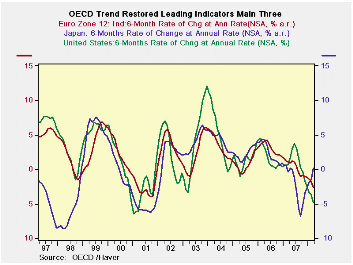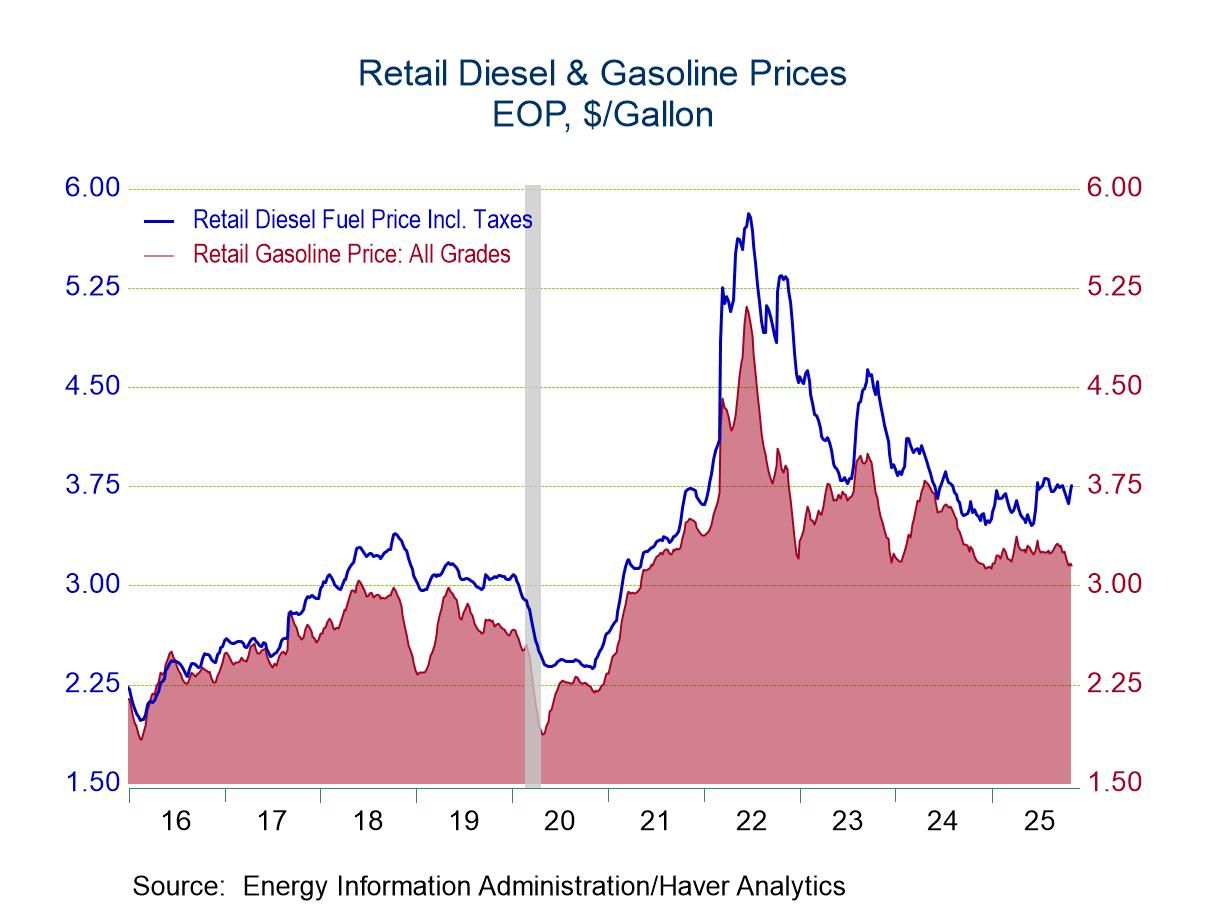 Global| May 14 2008
Global| May 14 2008OECD Indicators Show Faltering Growth Prospects
Summary
The OECD composite leading indicators show abroad slowing in the OECD area. Only Japan is showing a rebound and that is because it had been much weaker in earlier months. The six month horizons on the bottom of the table shows the CLI [...]

The OECD composite leading indicators show abroad slowing in
the OECD area. Only Japan is showing a rebound and that is because it
had been much weaker in earlier months. The six month horizons on the
bottom of the table shows the CLI trends in the six month periods that
the OECD likes to look at them. Weakness and accelerating weakness is
the predominate result on this basis of observation.
The chart shows that the depth of the slowdown in the various
indicators is comparable to their respective lows in the last
recession. Still the cycles are more out of phase at this time with
Japan dropping early and already signaling that it may be headed for
recovery- may be.
The Indicators are a stark reminder why the IMF has been
urging the ECB to hold off in being more aggressive in its inflation
fight. Already there is evidence of pending weakness that could help to
damp existing inflation pressures.
| OECD Trend-restored leading Indicators | ||||
|---|---|---|---|---|
| Growth progression-SAAR | ||||
| 3-Mos | 6-Mos | 12-Mos | Yr-Ago | |
| OECD | -1.9% | -1.7% | -1.3% | 1.3% |
| OECD 7 | -3.8% | -3.3% | -2.2% | 0.2% |
| OECD Europe | -3.9% | -2.3% | -1.8% | 1.5% |
| OECD Japan | 3.2% | 4.6% | -1.8% | -0.1% |
| OECD US | -6.1% | -5.7% | -2.4% | 0.1% |
| Six month readings at 6-Mo Intervals: | ||||
| Recent six | 6-Mos Ago | 12-Mos Ago | 18-Mos Ago | |
| OECD | -1.7% | -0.8% | 2.3% | 0.3% |
| OECD 7 | -3.3% | -1.2% | 1.1% | -0.6% |
| OECD Europe | -2.3% | -1.3% | 1.2% | 1.8% |
| OECD Japan | 4.6% | -7.7% | -0.3% | 0.0% |
| OECD US | -5.7% | 1.1% | 1.5% | -1.2% |
| Slowdowns indicated by BOLD RED | ||||
Robert Brusca
AuthorMore in Author Profile »Robert A. Brusca is Chief Economist of Fact and Opinion Economics, a consulting firm he founded in Manhattan. He has been an economist on Wall Street for over 25 years. He has visited central banking and large institutional clients in over 30 countries in his career as an economist. Mr. Brusca was a Divisional Research Chief at the Federal Reserve Bank of NY (Chief of the International Financial markets Division), a Fed Watcher at Irving Trust and Chief Economist at Nikko Securities International. He is widely quoted and appears in various media. Mr. Brusca holds an MA and Ph.D. in economics from Michigan State University and a BA in Economics from the University of Michigan. His research pursues his strong interests in non aligned policy economics as well as international economics. FAO Economics’ research targets investors to assist them in making better investment decisions in stocks, bonds and in a variety of international assets. The company does not manage money and has no conflicts in giving economic advice.






